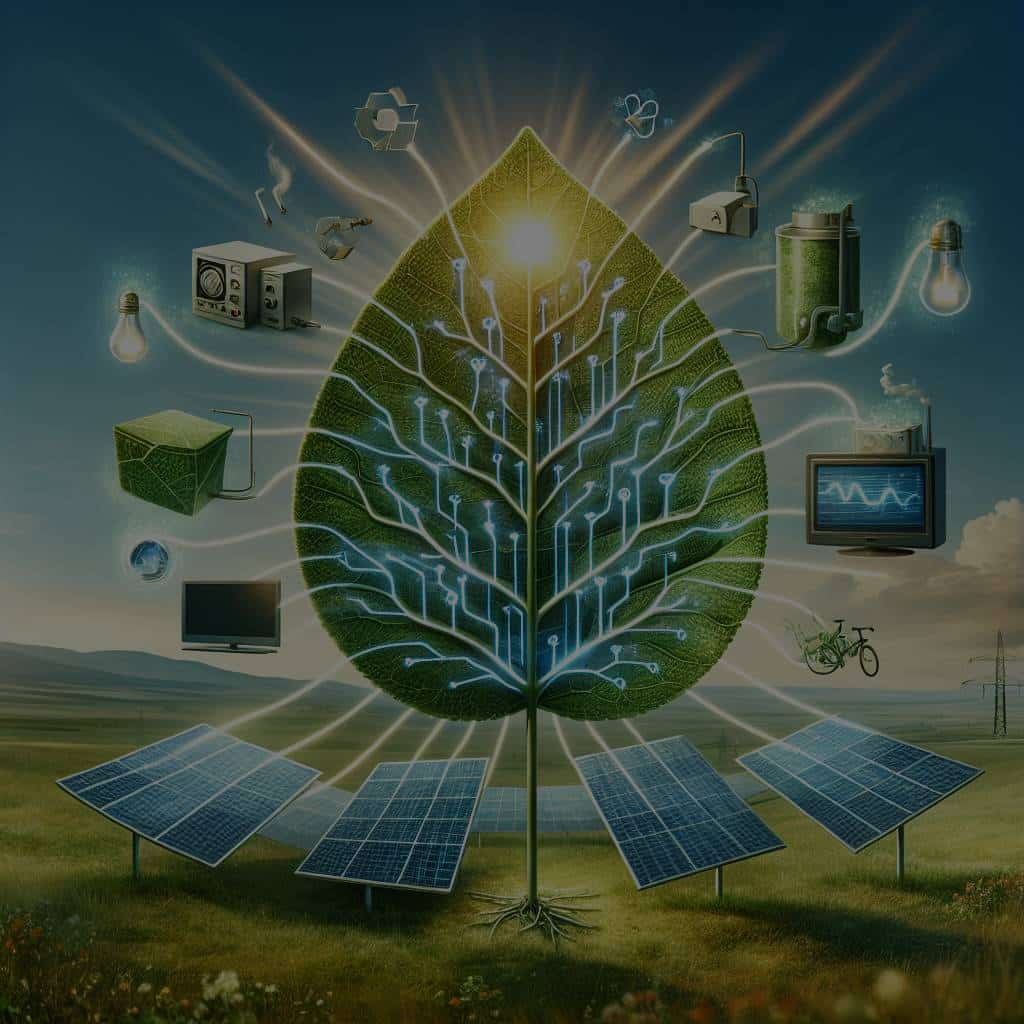How Can Artificial Photosynthesis Contribute to Renewable Energy Solutions?

In the quest to find sustainable energy solutions, we are constantly exploring new frontiers and possibilities. One such frontier is artificial photosynthesis. Photosynthesis, as you know from your basic biology lessons, is the process by which green plants convert sunlight, water, and carbon dioxide into glucose and oxygen. This process, performed by nature, is a perfect example of renewable energy production. Now, imagine if we could emulate this process artificially, but instead of producing glucose, we produce something even more valuable – hydrogen, a clean and efficient fuel source. This is the primary concept behind artificial photosynthesis. Let’s explore this fascinating concept further, and understand how it can contribute significantly to future energy solutions.
Understanding the Science Behind Artificial Photosynthesis
Before we dive into the potential of artificial photosynthesis, it’s important to understand the science behind it. Natural photosynthesis consists of two primary steps, the light-dependent reactions and the light-independent reactions (also known as the Calvin Cycle). The light-dependent reactions involve the absorption of sunlight by chlorophyll, and the conversion of this light energy into chemical energy in the form of ATP and NADPH. The light-independent reactions, on the other hand, utilize the ATP and NADPH to convert carbon dioxide into glucose.
A lire en complément : What Impact Could Nanobubble Technology Have on Aquaculture Productivity?
Artificial photosynthesis attempts to mimic this natural process, but with one significant twist. Instead of producing glucose, the goal is to produce hydrogen. This is achieved through the use of a solar-powered catalyst. When sunlight is absorbed by this catalyst, it triggers a chemical reaction that splits water molecules into hydrogen and oxygen. The hydrogen can then be collected and used as a source of clean energy.
The Role of Catalysts in Artificial Photosynthesis
The heart of any artificial photosynthesis system lies in its catalyst. The catalyst is the component that absorbs sunlight, and uses this energy to trigger the water-splitting reaction. There are several types of catalysts that can be used for this process, and the efficiency of the system largely depends on the choice of catalyst.
En parallèle : Will Automated Pharmacogenomic Data Interpretation Personalize Drug Prescriptions?
Conventionally, platinum has been used as the catalyst in water-splitting reactions due to its high efficiency. However, platinum is a rare and expensive metal, which limits its practical applications. To overcome this challenge, research is being conducted into more affordable and sustainable catalyst materials. Some promising candidates include cobalt-based and nickel-based catalysts.
In addition to the catalyst material, the design of the catalyst also plays a crucial role. The catalyst must be able to absorb a wide spectrum of sunlight, and efficiently convert this light energy into chemical energy. Furthermore, the catalyst must be stable and durable, as the water-splitting reaction involves harsh conditions and high temperatures.
The Potential of Hydrogen as a Clean Fuel
The primary product of artificial photosynthesis, hydrogen, holds immense potential as a clean and efficient fuel source. Hydrogen is a high-energy fuel, and when it is burned, it produces only water as a by-product, making it an excellent alternative to fossil fuels.
One of the key applications of hydrogen fuel is in fuel cells. A fuel cell is a device that converts the chemical energy of hydrogen into electricity. The advantage of fuel cells is that they are more efficient than traditional combustion engines, and they do not produce harmful emissions. Hydrogen fuel cells can be used in a variety of applications, ranging from powering vehicles to supplying electricity for homes and businesses.
Challenges and Future Directions in Artificial Photosynthesis
While the concept of artificial photosynthesis is promising, there are several challenges that need to be addressed. One of the main challenges is the efficiency of the systems. Currently, artificial photosynthesis systems are not as efficient as natural photosynthesis. Improving the efficiency of the catalysts and the overall design of the system is a key area of research.
Another challenge is the storage and distribution of hydrogen. Hydrogen is a volatile and difficult-to-handle gas, which makes its storage and distribution a complex task. Developing safe and efficient methods for hydrogen storage and distribution is a vital part of making artificial photosynthesis a viable energy solution.
Despite these challenges, the future of artificial photosynthesis looks bright. As research progresses, we are likely to see more efficient and affordable systems. This, combined with advancements in hydrogen storage and distribution, could make artificial photosynthesis a significant contributor to renewable energy solutions.
Advancements and Technological Breakthroughs in Artificial Photosynthesis
The field of artificial photosynthesis has seen significant advancements, particularly in the last decade. These advancements are not limited to the development of new catalysts but also include progress in the design of photoelectrochemical cells which mimic natural photosynthesis. These cells, not unlike solar cells, capture and convert solar energy into chemical energy, achieving the crucial step of energy conversion.
Efficiency has also been a primary focus of research. Current efficiency levels of artificial photosynthesis are still lower than natural photosynthesis, but rapid advancements are closing the gap. Scientists are developing catalysts that capture a wider spectrum of sunlight, thereby increasing the efficiency of energy collection and conversion.
Just as plants have leaves optimized to capture sunlight, research is also ongoing to design artificial leaves for artificial photosynthesis systems. These solar leaves can potentially increase the surface area for capturing sunlight, further enhancing the efficiency of the system.
Moreover, advancements in nanotechnology have opened a new frontier in artificial photosynthesis. Integrating nanotechnology can increase the surface area of catalysts, improve the efficiency of light absorption, and accelerate the water-splitting reaction.
In light of climate change, the ability of artificial photosynthesis to absorb carbon dioxide, a major greenhouse gas, offers potential dual benefits. While producing hydrogen, artificial photosynthesis systems could also help mitigate climate change by reducing carbon dioxide levels in the atmosphere.
Conclusion: Artificial Photosynthesis – A Promising Path Towards Sustainable Energy
As the world grapples with the twin challenges of energy shortage and climate change, artificial photosynthesis holds the promise of a viable solution. By mimicking a process perfected by nature over billions of years, it offers a path towards sustainable energy and a cleaner environment.
Harnessing solar fuel by splitting water into hydrogen and oxygen is a significant development. Hydrogen, as a clean and efficient fuel, can replace fossil fuels in various applications, reducing our carbon footprint. As issues of energy storage are addressed and large scale implementation becomes feasible, artificial photosynthesis could revolutionize our energy sources.
Today, as we stand at the cusp of a new era in renewable energy, the potential of artificial photosynthesis is undeniable. The road ahead may still have challenges like refining the efficiency of the catalysts, improving system design, and developing better hydrogen storage and distribution methods. However, with continuous research and technological advancements, artificial photosynthesis could well be the cornerstone of future energy solutions, providing a cleaner and more sustainable world.
As we look ahead, the future of renewable energy seems bright, and artificial photosynthesis could play a significant role in that future. The progress made in this field is a testament to human ingenuity and our commitment to finding sustainable solutions for a healthier planet.
